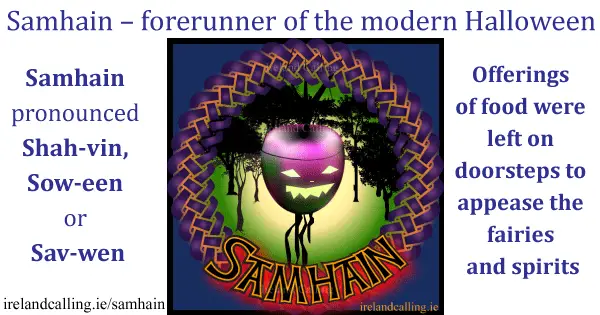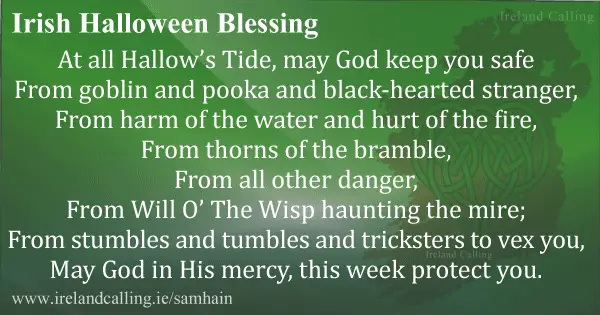Archaeologists in Ireland believe they may have found the site of the first ever Halloween bonfire.
The site is the Hill of Ward in Co Meath. The Hill of Ward is also known as the Hill of Tlachtga – named after a powerful druidess of Celtic mythology.
Tlachtga is said to have given birth to triplets on the hill.

The team currently digging on the hill believe they have found evidence of intense burning, likely to have been caused by a huge bonfire that would have taken place in around AD 500.
They believe it could be the site of the first bonfire in the festival that has evolved to become Halloween.
Dr Steve Davis of University College Dublin is part of the team of archaeologists working on the Hill of Ward. He said: “There are very few monuments in Ireland that we consider comparable to this.”
“This is a massive ceremonial enclosure. The location of it is striking with nearly 360 degree views around it, right in the heart of a major monumental landscape.”
Celtic Festival of Samhain
While modern Halloween is a time for dressing up in scary costumes and for children to go trick or treating, for the druids it was one of the most important festivals of their year.
The ancient Celtic festival – known as the feast of Samhain – took place from sunset on 31 October right through until sunset the following day – 1 November.
It signified the beginning of winter and the druids believed that it was the time when the veil between our world and the next world was at its thinnest.
As they sat for meals they would make sure they left empty places at the table for their dead.
They celebrated all that the earth had given them throughout the summer months and prepared for the dark days ahead.
Ancient druid traditions
Many of the traditions involved apples and cake, while others had connotations to do with marriage or death.

Bobbing for apples is the most well-known tradition that still has wide spread participation today. Another is a variant of bobbing for apples, with the apples hanging by a string from the ceiling rather than in a container of water.
In both event the participants must bite the apple without using their hands.
In some traditions a fruitcake will be shared with one slice containing a ring. The person that gets the ring will soon be married.
Another tradition sees the participant blindfolded and made to choose one of three saucers, each containing a different object.
The first object is a prayer book and signifies a calling to religious life, the second is a ring and symbolises a wedding may be on the horizon, while the third is a piece of clay and symbolises death.
It is thought that on Samhain Eve (31 October) all fires across Ireland were extinguished. People would come to the Hill of Ward and light small bonfires around the main fire on the Hill.
The Spirits of Meath
Speaking about Hill of Ward, Dr Davis, told BBC Northern Ireland: “We have found evidence of intense burning there, whether you want to equate that with Samhain or not.
“This monument is associated with fire. The medieval texts would associate this very strongly with an annual fire festival.
“It may also have been a place for crafting metal and glass and in those times, very few people knew how to do that, so it too would have been magical.
“There has been a suggestion that one of the reasons the site is not better known is that it was written out of the St Patrick story – that it was so infamous that the church did a very good job of trying to erase it from the mythology.”
The Spirits of Meath has become a popular tourist attraction and hundreds of people will head to the Hill this year to celebrate the Samhain.
The celebrations include a fire festival and a torch lit procession.
Here’s an Irish Halloween blessing.

All these links except those needing paragraphing have been added to https://ireland-calling.com/shamrock/ update with paragraphed links later.
Irish Symbols – each with their own fascinating origins and still relevant today
Celtic Cross
Brigid’s Cross
How Ireland protects its harp and shamrock emblems…take care if using them
Why the Guinness harp faces the opposite way to the official Irish harp
